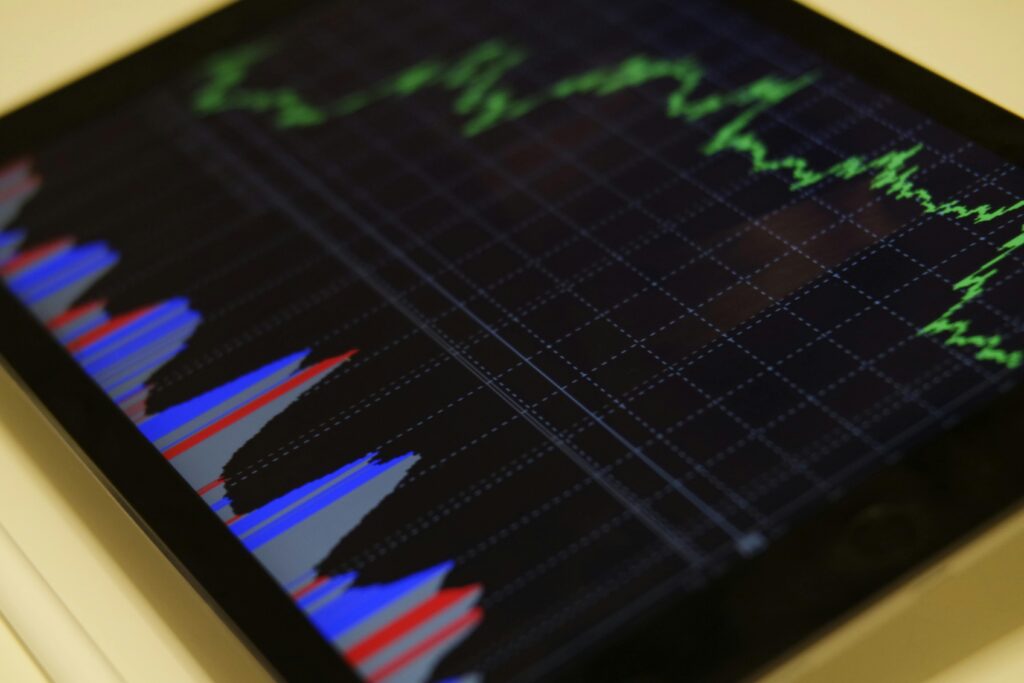Master stocks, forex, and crypto trading in 2025. A complete step-by-step guide for beginners—tools, strategies, risk management, and passive income tips.
1. Introduction
Trading has become one of the most accessible ways to grow wealth.
You can trade stocks, forex, commodities, and cryptocurrencies all from home.
But success requires knowledge.
This 2025 guide covers everything—from basics to advanced techniques.
You’ll learn how to trade smart.
You’ll learn to manage risk.
You’ll learn what tools work best.
And most importantly—you’ll learn to trade with confidence.
2. What Is Trading?
Trading means buying and selling financial assets.
Popular markets include stocks, forex, crypto, and commodities.
Traders profit from market movements.
They buy low. Sell high.
Or sell high. Cover low. (Short selling).
Trading happens fast.
It’s not the same as long-term investing.
In trading, timing matters more than hold.
3. Why Trade in 2025?
- Technology Access: Trading apps and platforms are everywhere.
- Low Costs: Fees are minimal or zero.
- Market Growth: Crypto and forex appealed to young users.
- Side Income Potential: People earn from home.
- Education Online: Courses and tutorials are widely available.
4. Trading Markets Overview
4.1 Stock Trading
- You buy company shares.
- Look for these sectors in 2025: tech, green energy, AI.
- Use tools like TradingView for charts.
- Keyword: “best stocks to trade 2025”.
4.2 Forex (Currency) Trading
- You trade currency pairs (e.g., USD/PKR).
- Forex is highly liquid and open 24/5.
- Learn about spreads and leverage.
- Keyword: “forex trading strategies”.
4.3 Cryptocurrency Trading
- Bitcoin, Ethereum, altcoins.
- High reward, high risk.
- Use platforms like Binance, Coinbase.
- Keyword: “crypto day trading”.
4.4 Commodities & Indices
- Oil, gold, silver, S&P 500, Nasdaq.
- Hedge portfolios using these.
- Keyword: “commodity trading tips”.
5. Essential Tools & Platforms
Make sure your tools are reliable.
- Broker Platforms: e.g., TD Ameritrade, Binance, MetaTrader
- Charting Tools: TradingView, Coinigy
- News & Alerts: Bloomberg, Google News, TradingView alerts
- Risk Management: Use stop-loss and take-profit orders
- Automation: Use EAs (for forex) or automated bots (for crypto)
6. Step-by-Step Trading Strategy
6.1 Market Research
- Use technical and fundamental analysis.
- Use keyword-focused tools to check volatility and sentiment.
6.2 Planning the Trade
- Identify entry and exit prices.
- Set stop-loss and take-profit.
- Limit risk per trade (1–2% of your capital)
6.3 Managing the Trade
- Stay disciplined.
- Don’t chase losses.
- Let winners run (sensibly).
6.4 Post-Trade Review
- Review your trades
- Track P/L and mistakes
- Refine your strategy
7. Trading Styles & Strategies
- Day Trading: open and close within a day
- Swing Trading: 2 to 5 days per position
- Scalping: very short-term, high frequency
- Position Trading: weeks to months
Choose a style that matches your schedule and risk appetite.
8. Risk Management Explained
- Never risk more than 1–3% per trade
- Use stop-loss to protect capital
- Diversify across assets and styles
- Manage emotions: fear and greed hurt you
9. Tips for Beginners
- Start with paper trading
- Use demo accounts
- Learn one market first
- Use small capital
- Read market news daily
- Keep a trading journal
10. Advanced Techniques
- Technical Indicators: RSI, MACD, Moving Averages
- Chart Patterns: Head & shoulders, triangles, double tops
- Fibonacci Levels
- Volume Analysis: confirms trends
- Sentiment Tools: gauge market mood
11. Trading Psychology
- Manage stress
- Accept losses
- Avoid revenge trading
- Stay disciplined
- Practice mindfulness and breaks



12. Building a Trading Routine
- Morning routine: market prep
- Mid-day: track open positions
- Evening: review and plan
- Weekly/monthly: analyze performance
13. Legal & Tax Considerations
- Register with local tax authority
- Keep records of trades
- Know margin rules
- Avoid illegal insider trading
14. Common Trading Mistakes
- Overtrading
- Skipping stop-loss
- Chasing the market
- Trading without strategy
- Ignoring portfolio balance
15. Resources & Learning
- Books: Technical Analysis of the Financial Markets
- Websites: Investopedia, BabyPips
- Forums: r/Trading
- Courses: Focused on 2025 crypto and forex
16. FAQs
Can I trade full-time?
Yes—but start as part-time. Build consistency.
How much capital do I need?
Begin with $500–$1,000. Increase gradually.
Can beginners profit?
Yes. But most beginners lose at first. Learn and adapt.
Which market is best?
Forex and crypto have low entry. Stocks more stable.
17. Conclusion
Trading can be a rewarding path.
It’s accessible, scalable, flexible.
With the right strategy and discipline, anyone can do it.
This guide gives practical steps: from tools and techniques to psychology and routine.
Now—it’s your move. Start learning. Start small. Grow steadily.
